How To Change Tempo In Logic Pro X
Logic Pro X x.four.2 has ushered some major developments in its Smart Tempo functionality, making information technology much easier to control your project'due south tempo. Nosotros clock on…
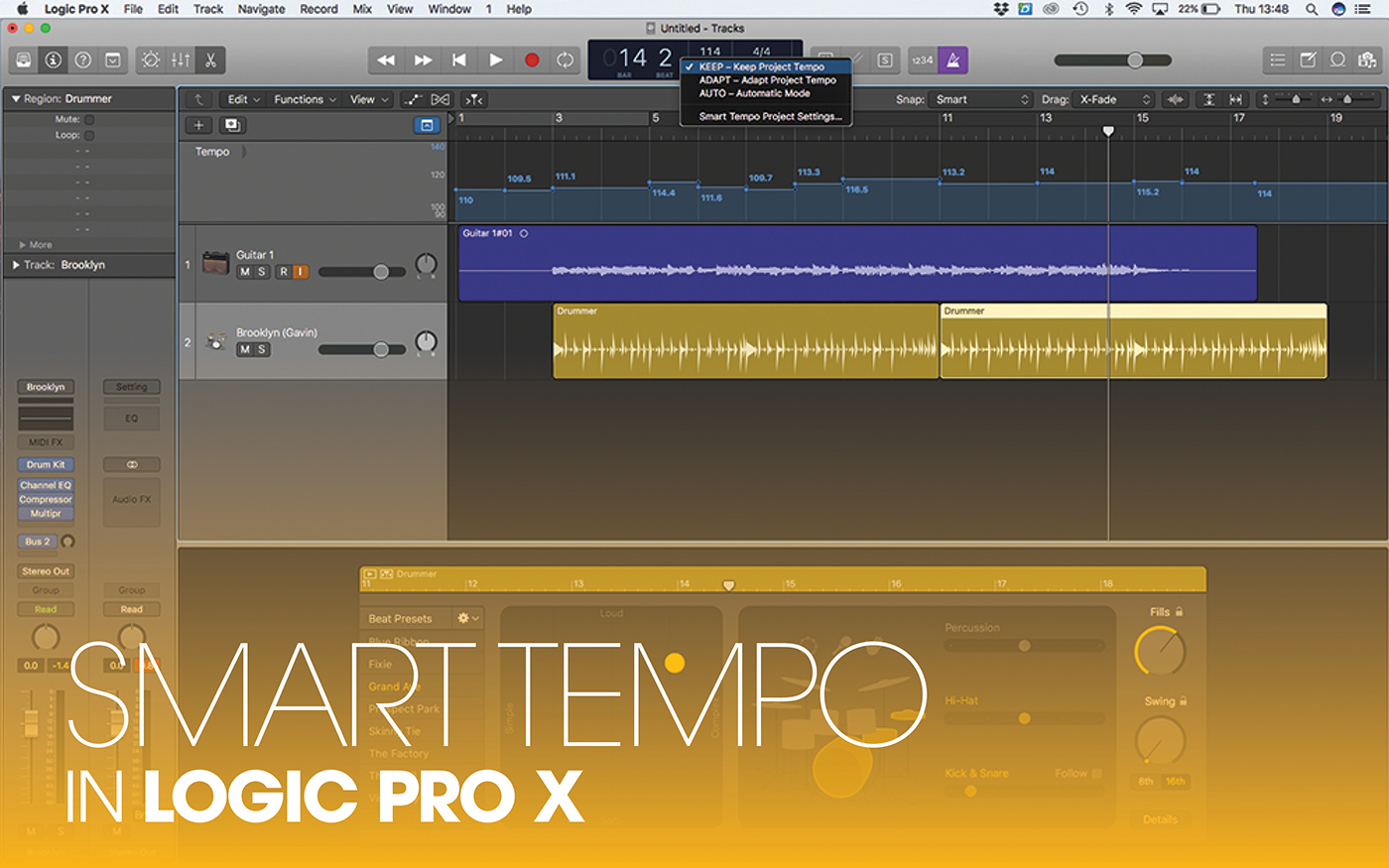
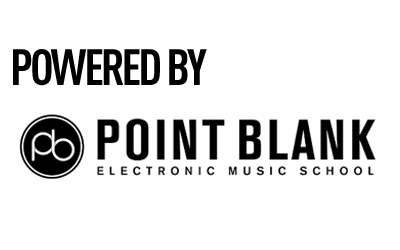
We've undoubtedly come a long style since the days of manually time-stretching or re-pitching a pulsate loop to place it in-sync with the tempo of your MIDI sequencer. Indeed, Logic Pro X now includes a wealth of tempo-related functionality that offers flexibilities in both directions – whether you're locking a range of different loops to a unmarried tempo, for case, or trying to lock Logic's tempo to the more elasticated grid of a real performance.
With the introduction of Smart Tempo in 10.4, and in 10.4.2, the choice to utilize Smart Tempo features across multitrack performances, information technology'south well worth spending some time agreement new tempo functionality as in many means Logic now leads the field in respect to tempo flexibility!
Rather than being built from scratch, Smart Tempo is bolt-on to the Flex Time technology first introduced in Logic Pro 9. Technically speaking, Smart Tempo is an 'intelligent' front end-end to Flex Fourth dimension engineering – clever enough to extract precise tempo information from a range of audio material, and also flexible and intuitive enough to permit you work with the information in a diversity of means. Much of what can be achieved with Smart Tempo could have been achieved prior to 10.iv.1, although it required more homo input and, more importantly, time to achieve.
Click-less recording
1 of the headline features of Smart Tempo is the freedom to record both MIDI and Sound information into Logic without the need of a click. Working inside a DAW has traditionally meant being slaved to the click at all points. The breakthrough with Smart Tempo is that Logic can interpret what yous've played and accommodate the project tempo to your functioning.
At first, Smart Tempo tin can seem little more than a inexpensive gimmick, simply for 'looser', more than naturalistic musical styles the ability to play a part without the constant 'tick tock' of a metronome is liberating! Add drums, loops and then on, and everything fits perfectly with your performance, retaining the all-important expression that tempo fluctuations tin bring.
As with all automated 'intelligent' processes, there are limits to what Smart Tempo can interpret. The technology is based on establishing downbeats so using the fourth dimension betwixt these two points to found the tempo. Your playing style needs to be clear, therefore, and, inside reason, 'rhythmic'. If you're trying to institute an initial 'human' tempo grid, choice a uncomplicated strumming guitar part, for instance, rather than anything as well complicated or syncopated.
Smart thinking
I significant introduction in version 10.4.2 was the ability for Smart Tempo calculations to exist practical across groups of tracks. For instance, you might record a song with a band straight into Pro Tools, which you lot and so decide to import into Logic for farther production or mixing. As part of the importing process Logic can extract all the relevant tempo data from an analysed 'downmix' of the operation. Even if information technology'due south for something equally simple as keeping your filibuster times in-sync, the Smart Tempo functionality is a speedy tool.
Going loopy
As well every bit 'click free' recording, Smart Tempo has too made the process of working with loops much easier to accomplish. Opening the Smart Tempo Editor lets you view the tempo information stored with the audio file, or, in the instance of no information existence stored, you tin tell Logic to Analyse the audio file. One interesting feature is Logic's ability to analyse the downbeat and differentiate this from the start of the audio file. Of class, this makes a lot of sense with audio recorded without a click, but where a loop has few beats silenced this can create an issue. In the case of a faulty downbeat, you can click to reassign the right downbeat appropriately.
With loops, of course, you'll exist forcing the loop to arrange the Projection's Tempo, as well as using Flex Fourth dimension'south transposition characteristic to melody the loop to the primal signature of your song. Whatever road you lot choose, though, Smart Tempo makes it easier for you to dictate the use of tempo, rather than but being a slave to your DAW'south metronome. Tempo – like whatsoever aspect of a song's musicality – should be something you lot define, rather than something that is imposed upon you.
Smart tempo: step-by-pace
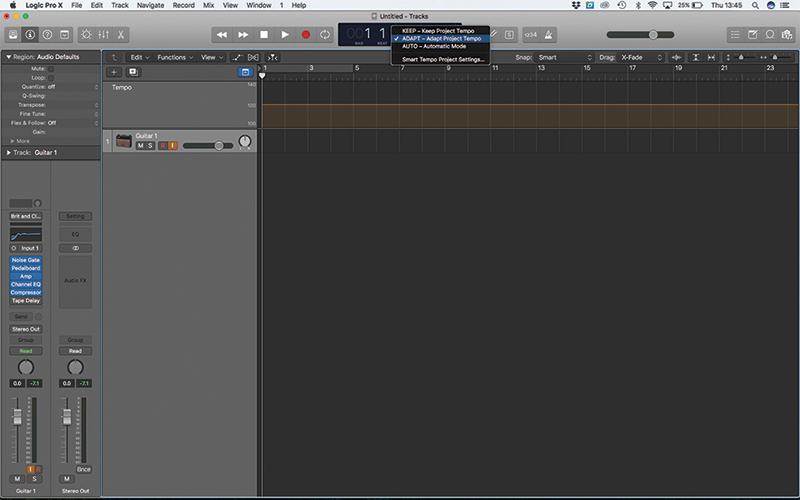
i.In this beginning example we'll look at how Logic can suit to your performance, rather than you follow a click. Beginning by setting the Project Tempo mode to Adapt and record-enable an audio track.
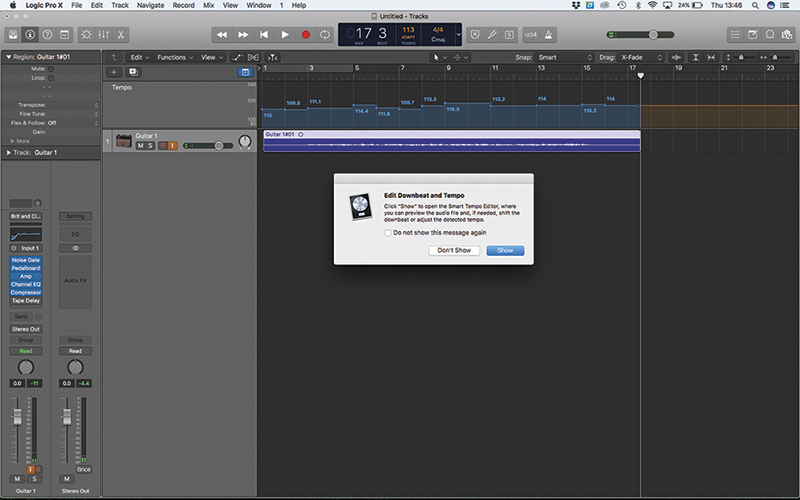
2. When you lot've finished your recording, Logic will analyse the file and use that information to change the Project Tempo appropriately. If you want to see the results of the assay, printing the Show button.
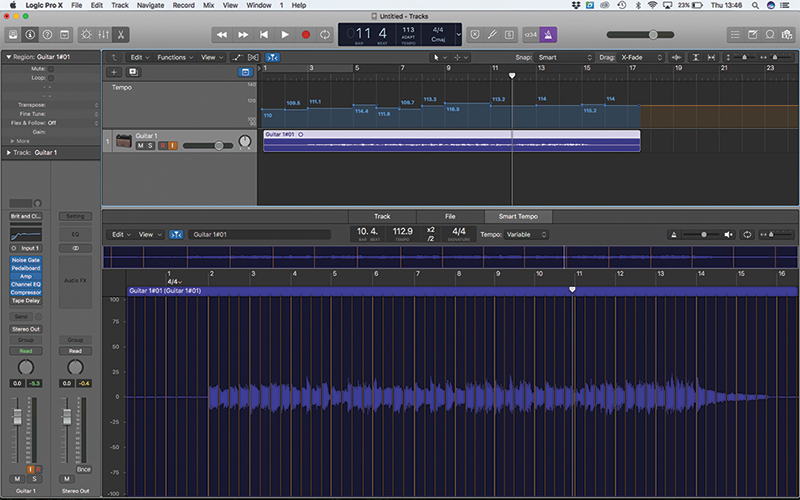
3. Pressing Testify will bring up the Smart Tempo Editor window. Yous don't technically demand to arrange anything here, but yous tin see how Logic had interpreted your playing, including downbeats and tempo changes on a per-bar footing.
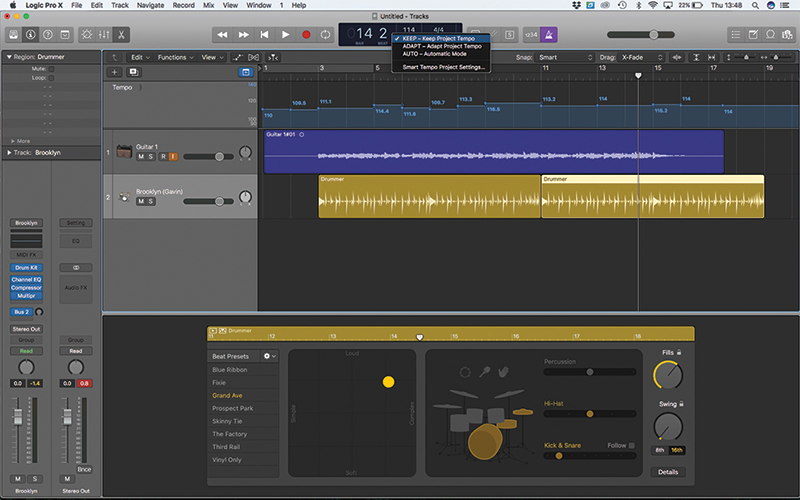
four. One time you've established your chosen 'human' tempo you'll want to set the Project Tempo mode dorsum to Keep. Try adding a Drummer runway and listen to how it tracks your playing like a very 'tight' band.
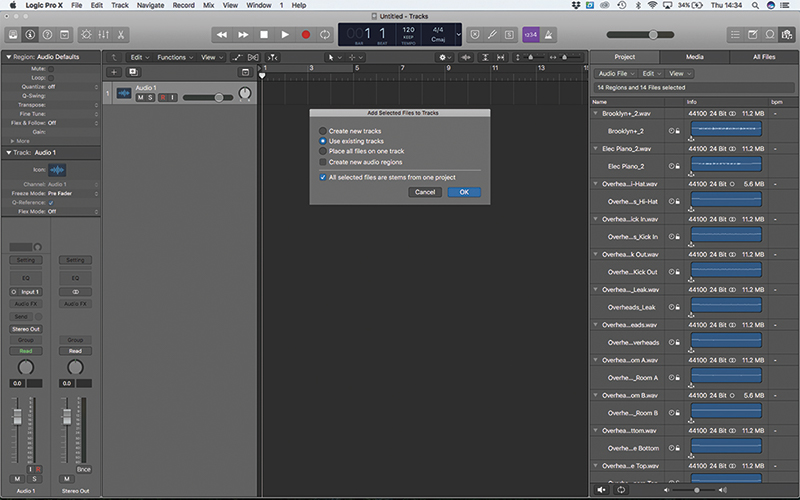
5. This next example uses the audio files from the 'Multitrack' folder, which you can import into an empty project. Elevate these into the project and ensure y'all selected the 'Selected files are stems from 1 project' option.
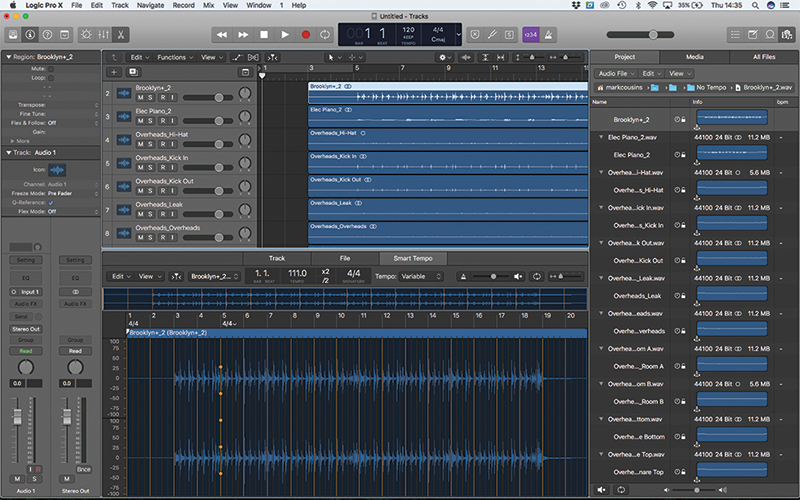
vi. Once you've dragged the files into the Arrange Area, open up the Smart Tempo Editor and notice how Logic has calculated a variable Region Tempo for the performance, alongside a drop-down menu for the multitrack set.
![]()
TEMPO METADATA Whatever file recorded into Logic, or bounced from Logic, will be stamped with Tempo information (as well as Markers) as part of the audio file'southward metadata.
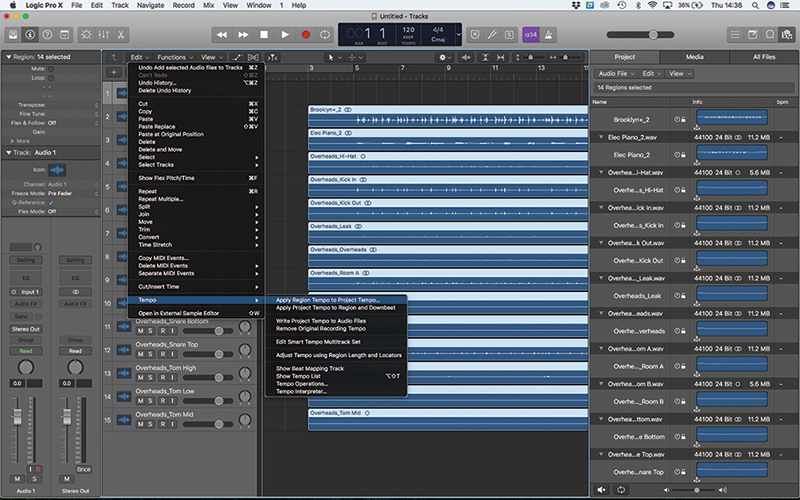
7. To change the project'due south Tempo grid, highlight the regions and select the local carte du jour option Edit > Tempo > Apply Region Tempo to Project Tempo. Play the regions back confronting click to hear the result in activeness.
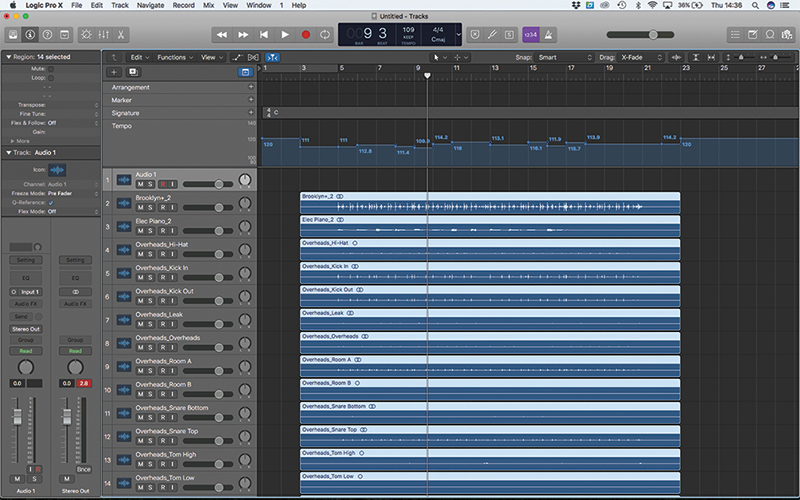
8. Open the Global Track (keyboard shortcut M) or the Tempo Listing editor to run across the newly-created tempo grid for your project. Logic volition create a new tempo event for each bar that the tempo changes.
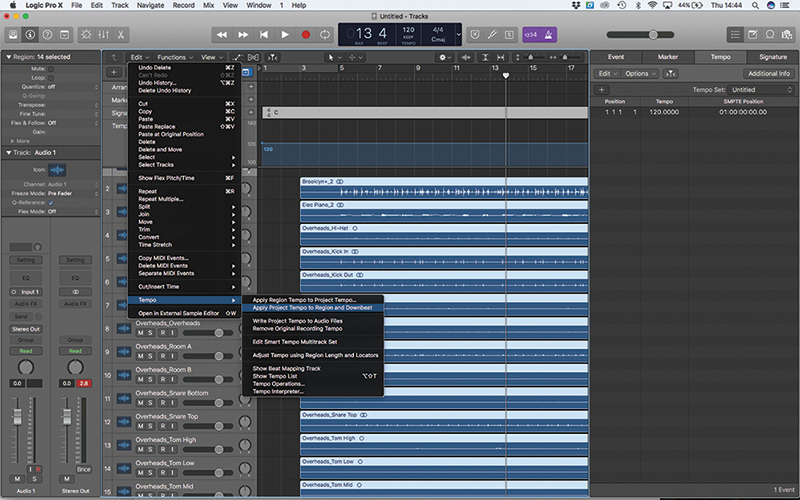
9. You can, of course, work the other manner around and have the imported takes match your existing Project Tempo. To try this, first by deleting all the newly-created tempo events using the Tempo List Editor.

x. Highlight all the regions and select the local menu option Edit > Tempo > Use Project Tempo to Region and Downbeat. The performance will at present consistently play at 120 bpm without whatsoever drift betwixt bars.
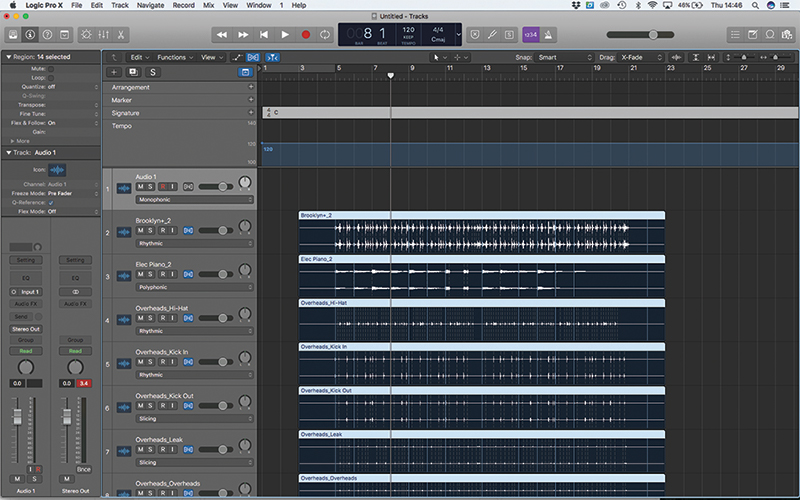
11. Y'all see how Logic can manipulate the takes by opening Flex View (Edit > Prove Flex Pitch/Time). Across multiple takes like this, though, the results can sound 'phasey' past virtue of the fourth dimension slippages between regions.
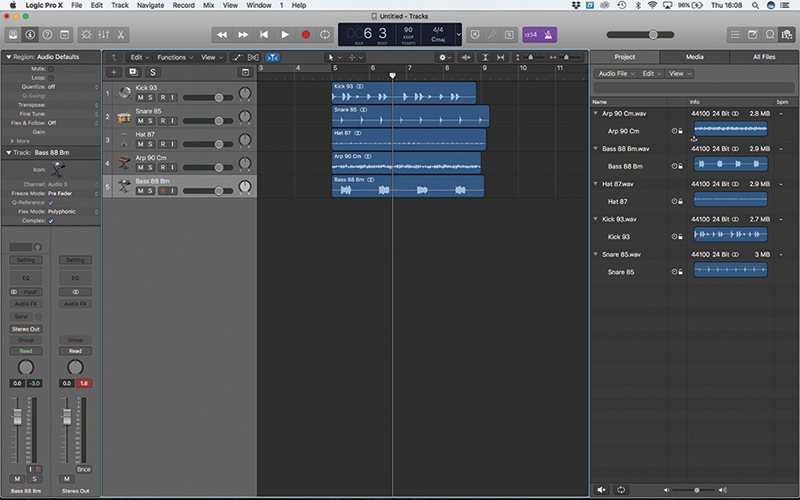
12. This next case uses the sound files included in the 'Loops' folder. Import them into an empty project and identify them into your arrangement without any correction. Fix the project tempo to 90 bpm to match the Arp track.
![]()
METADATA Issues In some cases, having Metadata information tagged to your audio file can be problematic, particularly if it's wrong. In these situations utilise the carte du jour function Edit > Tempo > Remove Original Recording Tempo.
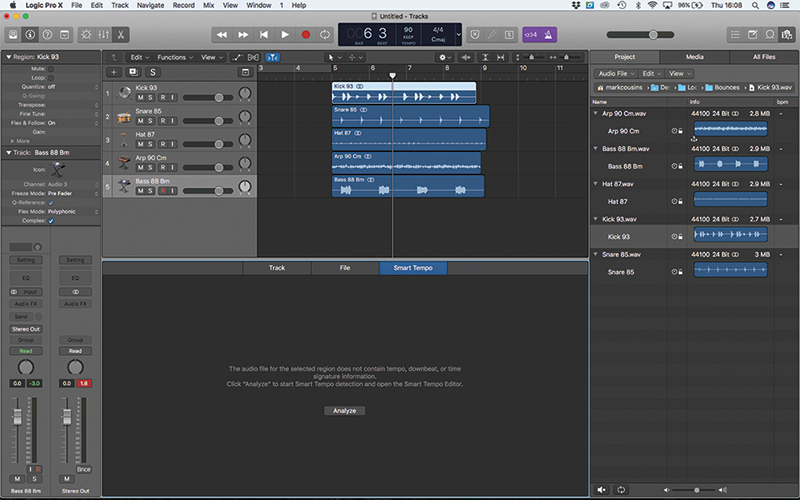
13. Open the Kick Region in the Smart Tempo Editor. The region won't have whatever currently assigned tempo information, and then press the Analyze button to deport this out. The result should exist 93 bpm as indicated in the filename.
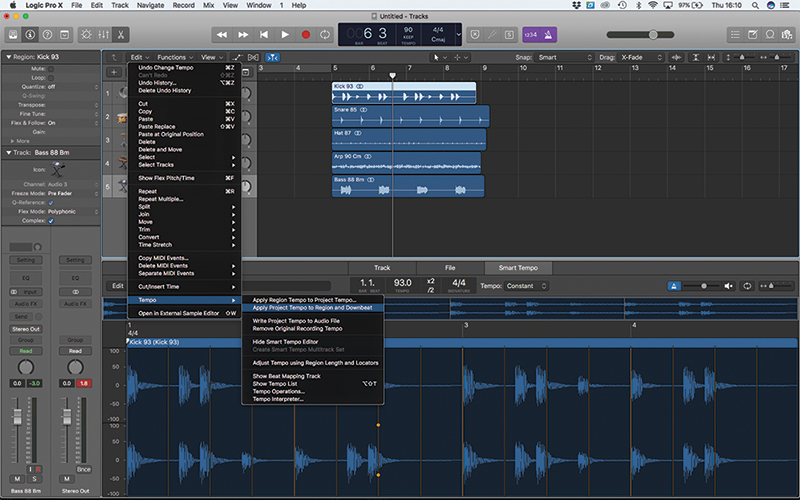
14. To make the region conform to your projection's tempo, select the local carte particular Edit > Tempo > Apply Project Tempo to Region and Downbeat. Repeat this process for the Lid, Snare and Bass accordingly.
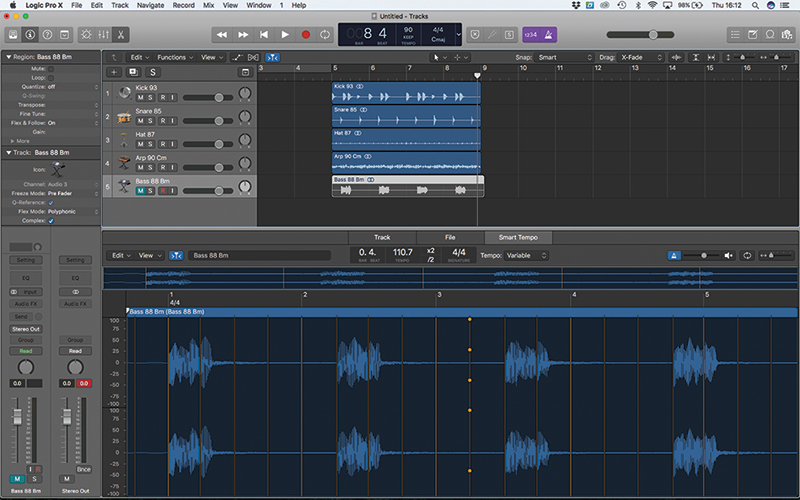
15. The bass is a good example of how Smart Tempo occasionally gets things wrong – largely because it perceives the downbeat as occurring on the first on the first bass note (which is a reasonable assumption, to be fair).
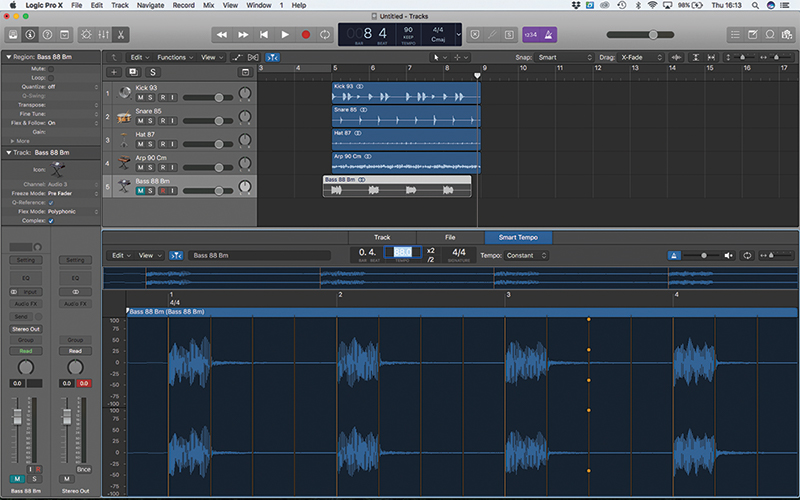
16. In examples like this where yous know the tempo, y'all can set information technology in manually towards the pinnacle of the Smart Tempo Editor. In this example, nosotros've forced Logic to work with a Region Tempo of 88 bpm.
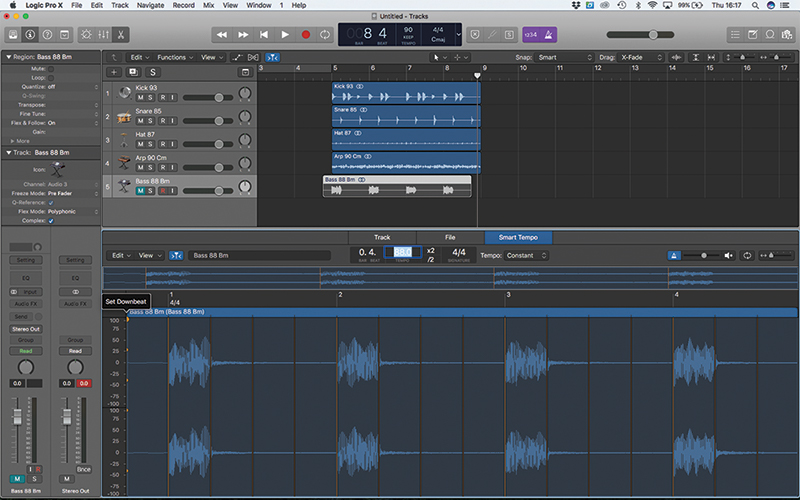
17. With the tempo correctly set, we can force to Downbeat using the small dot at the top of each crush division. With the downbeat set at the offset of the audio file, note how the off-beat out bass now falls into line.
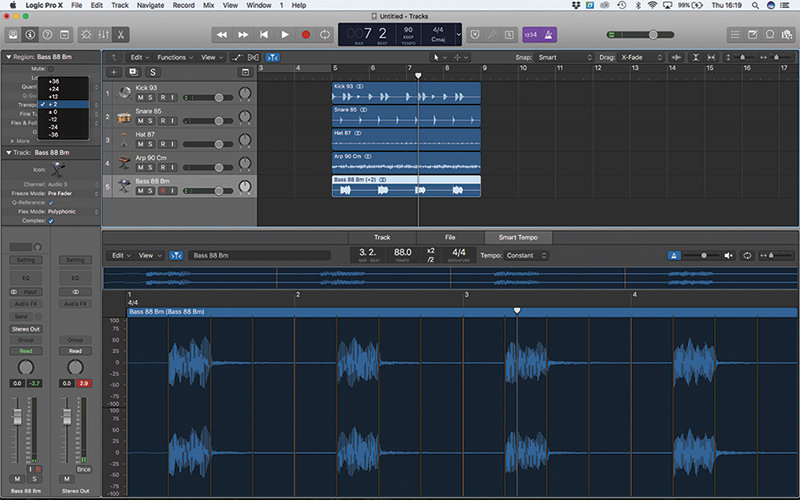
eighteen. As the bass is in a different key, we need to tune information technology to Cm using the Transposition feature into the Region Inspector. Play back all the loops, which should now be perfectly in fourth dimension and tune with i another.
Source: https://musictech.com/tutorials/smart-tempo-in-logic-pro-x/

0 Response to "How To Change Tempo In Logic Pro X"
Post a Comment